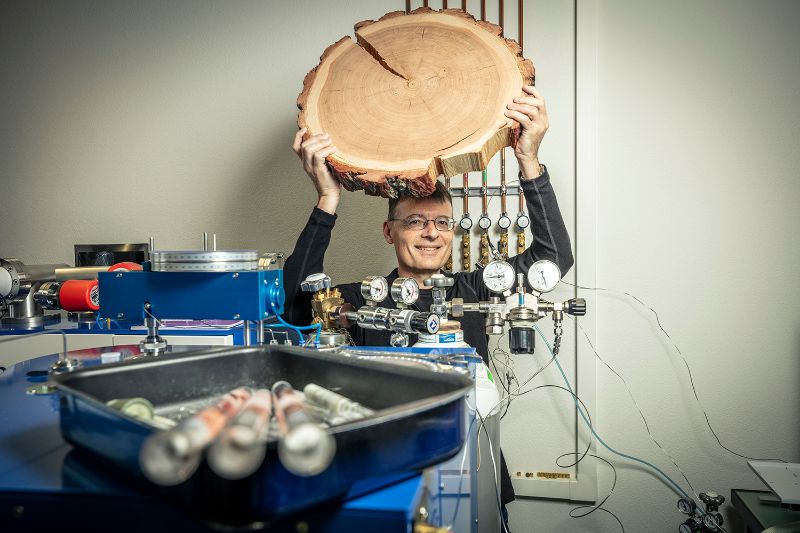What isotopes reveal about climate change
“Isotopes are a constant factor in my life as a researcher,” says Matthias Saurer, who heads the WSL isotope laboratory in Birmensdorf where several mass spectrometers are located. “Isotopes are atoms of an element that have different amounts of neutrons in stable or radioactive form and thus different masses. Mass spectrometers in the laboratory make it possible to examine isotopes of carbon, hydrogen, oxygen or nitrogen, which are naturally present in the environment,” explains the scientist. In this way, isotope ratios can be determined and high-resolution isotope analyses of organic material can be carried out, which is useful in very different research areas. “It is a matter of being active at the forefront of research with ever more precise methods and conducting basic research,” explains Saurer.
This can help us to better understand complex changes in nature, such as the dramatic decline in biodiversity caused by various factors. Or the effects of increasing and more frequent droughts in the forest. This results in findings that ultimately provide the basis for official measures to protect nature and the foundations of human life.
Saurer is also synonymous with the development of isotope research on the climate and ecology. At the University of Bern’s Physics Institute, he received a doctorate for his research on isotopes and used the mass spectrometer early on. Later, he was involved in the development of this methodology at the PSI’s Laboratory of Atmospheric Chemistry. During this time, an increasing interest in stable isotopes developed in forest and environmental research, resulting in close cooperation with WSL. In 2017, Saurer was able to transfer the measuring devices and his workplace from the PSI to WSL, where he became head of the newly created isotope laboratory: this enabled the measurement technology from physics and the expertise in research on forests and landscapes to also be brought together in a single location. Isotope research is complex and the isotopes in plants have a cross-divisional function. For instance, other disciplines play a major role in any scientific issue.
In forest research, for example, these include biology and climatology. For the understanding of the processes in plants, this applies to chemistry or biochemistry. With the interdisciplinary approach and the instruments of mass spectrometers, isotope research contributes to a better understanding of often hidden processes in nature and researchers at the isotope laboratory can answer a whole series of important questions. For example, the nutrient and water balance in forests. More specific analyses can also be used to examine individual components such as sugar in leaves or tree needles, in which the various isotopes of carbon and oxygen are absorbed through photosynthesis. In the case of dryness, their isotope signature changes, which then also enters the wood and is permanently stored there. Therefore, the isotope researcher is very interested in understanding what happens in tree needles when the climate changes.
One traditional application is research on trees’ growth rings. For example, the isotope laboratory was involved in 2020 when an international research team analysed over 27,000 measurements of the isotope ratios of oxygen and carbon in 147 European oaks using growth rings spanning a period of more than 2,000 years. The tree samples come from historic wells, buildings or pile dwellings, from river bank sediments and living trees in the Czech Republic and Bavaria. It is the most detailed collection of data on the hydroclimatic conditions from the Roman Empire to the present day.
Conclusive evidence of climate change? The elaborate history of the trees spanning two millennia and the measured isotope ratios suggest that the dry periods of the past five years have actually been exceptional.
“There are different levels of certainty when it comes to statements about climate change,” says Saurer, “it is clear that the increase in carbon in the atmosphere is caused by humans, as is the associated rise in temperatures. But even in the case of torrential rain, clear statements are more difficult.” The reason is that precipitation is a very heterogeneous phenomenon involving regional, often only localised events. Establishing a clear causality between heavy rain and the increase in carbon is not easy. However, isotope research also helps where this is concerned. “Our growth ring analyses always produce important new findings relating to this issue,” says Saurer.
